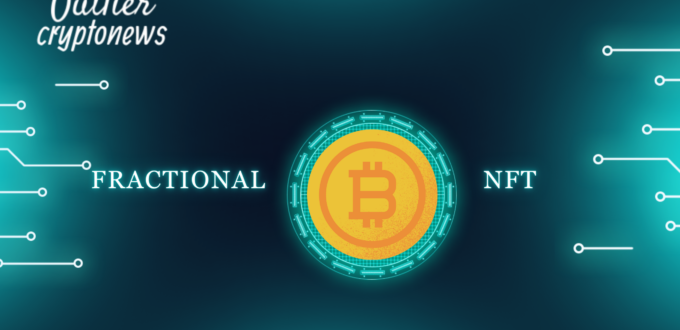Non-fungible tokens or NFTs have exploded in popularity, offering a unique way to own and trade digital assets. However, the high price tags of coveted NFTs can often exclude many interested collectors. Enter fractional NFTs – a revolutionary concept that breaks down ownership of these digital treasures, making them more accessible to a larger audience. This blog dives into the fascinating world of fractional NFTs, exploring how they work, their benefits and drawbacks, and their potential impact on the NFT market.
From One to Many: Breaking Down NFT Ownership
Imagine a rare and expensive painting. Traditionally, only one person could own it. Fractional NFTs disrupt this paradigm for the digital art world. They essentially take a single NFT and divide its ownership into smaller, tradable units called fractions. Each fraction represents a portion of the original NFT’s value and ownership rights.
The Mechanics of Fractionalization: Bringing the Magic to Life
Understanding how fractionalization works:
- Smart Contracts: The Code Behind the Split: Blockchain technology plays a crucial role. Smart contracts, self-executing programs on the blockchain, handle the process. The NFT owner sets the terms of the fractionalization, specifying the number of fractions to be created and the price of each.
- Fractions as Ownership Units: Once the terms are set, the smart contract divides the NFT into fractions, often represented by ERC-20 tokens (a type of cryptocurrency token on the Ethereum blockchain). Owning a fraction grants you a piece of the original NFT and a proportional share of any future benefits associated with it.
Unlocking Potential: The Advantages of Fractional NFTs
Fractional NFTs offer a plethora of advantages for both creators and collectors:
- Accessibility for Collectors: High-value NFTs are now within reach for a broader audience. Collectors no longer need to shell out a fortune to own a piece of a coveted digital asset. This opens doors for greater participation and fosters a more inclusive NFT ecosystem.
- Increased Liquidity: Fractionalization creates more tradable units. This enhances liquidity for NFTs, as fractions can be more easily bought and sold compared to the entire NFT. Increased liquidity can benefit both collectors looking to cash out and creators who might see their work gain wider exposure.
- Benefits for Creators: Fractionalization allows NFT creators to unlock additional value from their work. They can reach a wider audience of collectors, potentially leading to increased overall revenue. Additionally, some platforms might offer creators a share of the royalties generated when fractions are traded.
A Word of Caution: Potential Drawbacks to Consider
While exciting, fractional NFTs do come with some potential drawbacks:
- Complexity: Fractionalized ownership can be more complex to manage compared to owning an entire NFT. Voting rights, profit sharing, and decision-making processes within a fractionalized NFT might require clear guidelines established in the smart contract to avoid disputes.
- Platform Dependence: Fractionalization often relies on specific platforms with their own rules and fees. Researching and choosing reputable platforms with transparent terms and a proven track record of security is crucial.
- Market Volatility: The NFT market is still young and inherently volatile. The value of both the original NFT and its fractions can fluctuate significantly, so careful research and due diligence are essential before investing.
A Glimpse into the Future: The Impact of Fractional NFTs
Fractional NFTs represent a significant innovation in the NFT space. Their ability to democratize ownership and increase liquidity has the potential to transform the NFT market in several ways:
- A Booming Market: Fractional NFTs could attract a wider audience of collectors, potentially leading to a more robust and thriving NFT market.
- New Investment Opportunities: Fractionalization opens doors for alternative investment strategies involving NFTs, making them potentially more attractive to a wider range of investors.
- Evolution of NFT Use Cases: As ownership becomes more accessible, NFTs could find new applications beyond digital art, potentially extending to ownership of virtual assets in gaming or even fractionalized ownership of real-world assets in the future.
The Final Word: Fractional NFTs – A Transformative Force
Fractional NFTs represent a significant step forward in making NFTs more accessible and engaging for a broader audience. While there are challenges to navigate, the potential benefits for both creators and collectors are undeniable. As the technology and market evolve, fractional NFTs have the potential to become a transformative force in the world of digital ownership and unlock exciting new possibilities for the future.

